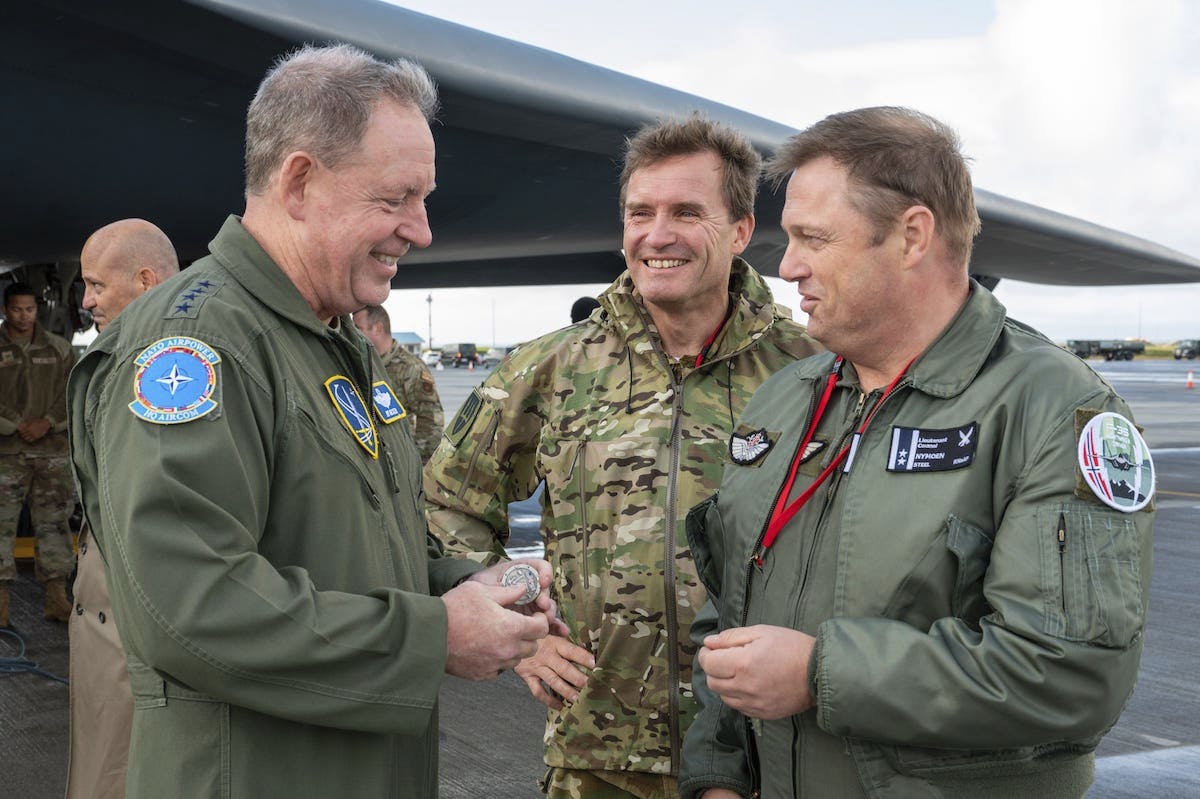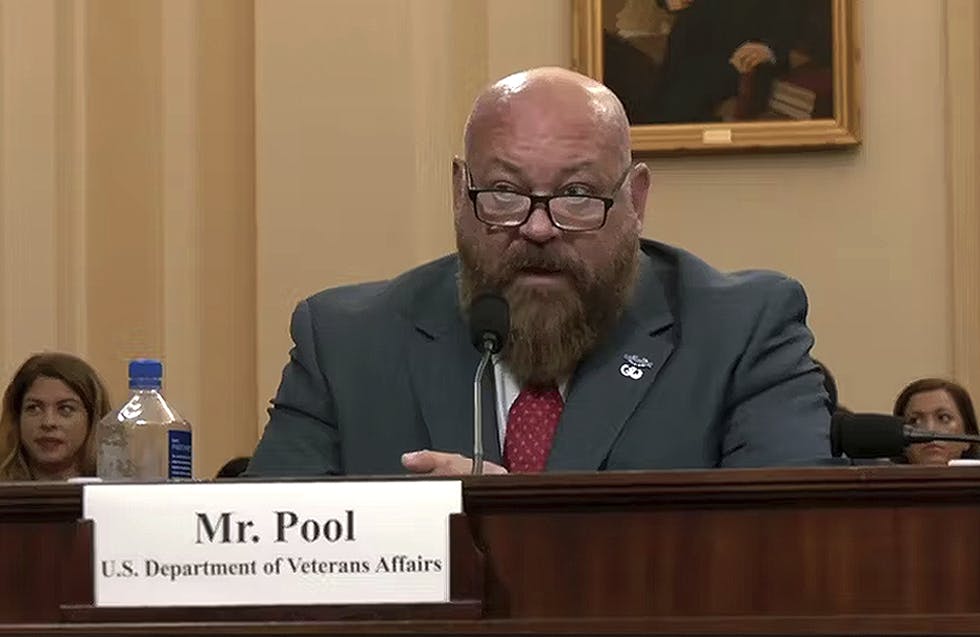Lessons Learned From the Air War in Ukraine Drive DOD Air Dominance Priorities
The Space Force aims for new space systems to achieve space domain capabilities.

U.S. Air and Space Force leaders cited the importance of air dominance to winning a conflict and set goals to deliver more resilient space systems and achieve space domain awareness and capabilities by 2026.
“I think most folks thought that this war would be over in two weeks, maybe a month. And here we are, 18 months later, and it’s still going on, and the reason that is is because neither side has been able to gain air superiority. And when you don’t, you end up seeing the fight that we’re seeing today,” Gen. James Hecker, commander of U.S. Air Forces in Europe and U.S. Air Forces in Africa, said at AFA’s Air, Space & Cyber Conference in National Harbor, Maryland, last week.
The comments came after Ukraine’s recent attack on two Russian ships along with the naval shipyard infrastructure in annexed Crimea and is the latest example of Ukraine’s growing capabilities in the air domain. The attack is considered the largest one on the headquarters of Russia’s Black Sea Fleet since the start of the Russian invasion of Ukraine 18 months ago.
“But all the equipment that we are giving [Ukraine] — most of it depends on space superiority and what we get from space, so just as important as air superiority is space superiority as we move into the future,” he added.
Space Force Maj. Gen. Douglas Schiess, commander of Combined Force Space Component Command and vice commander of Space Operations Command, said it is vital for the service to have resilient architectures in place for continuous satellite communications and navigation abilities in denied environments.
“We have learned lots of lessons from Ukraine. I’d say the first one is proliferated low-Earth orbit communication satellites and the ability to provide communications when we thought maybe we wouldn’t be able to from jamming and other things,” Maj. Gen. Schiess said.
“Obviously, in the fight there, we have seen electronic interference for both satellite communications and GPS,” he added. “And we have to realize that we’re going to have to fight through that.”
Maj. Gen. Schiess also emphasized the need for the U.S. to deliver missile sensing and warning capabilities that will allow it to detect ballistic and hypersonic missiles and effectively respond to potential threats. Last year, the Space Force established a program office to coordinate the efforts to procure satellites that detect hypersonic missiles, a needed effort due to the agencies struggling to work together to build an architecture for resilient missile sensing capabilities.
Being cybersecure, having space domain awareness and bringing partnerships together are also vital in achieving air and space superiority.
“We have to have intel-focused, cybersecure, combat credible forces that are partners with our coalition and our mission partners … we have to have the right intelligence to be able to know what is going on in our domain. We have to know what our adversaries are doing when they’re doing it. We have to have intelligence officers that are getting after that to say, hey, this might be the intent of what they’re doing that has to then feed into our operations,” said Maj. Gen. Schiess.
The U.S. has largely relied on ground-based systems for surveillance, but space-based systems are growing in priorities as they remain essential to addressing the leadership’s growing concerns about on-orbit threats.
This is a carousel with manually rotating slides. Use Next and Previous buttons to navigate or jump to a slide with the slide dots
-

NSF Wants Industry Driving Quantum Innovation
The agency is pushing for partnerships to enhance the research community as Congress weighs additional legislation.
3m read -

White House Science Chief: US-Driven AI Sets Global Standards
Michael Kratsios outlined how American AI technology on the global stage will help standardize the tech and counter China’s influence.
5m read -

Modernizing Critical Infrastructure in the Face of Global Threats
Officials are expanding the latest strategies in boosting defense infrastructure, including securing satellite communications, upgrading enterprise-wide technology, optimizing data management.
20m watch -

Trump AI Orders Call for Speed in Building Infrastructure
The directives call for expanding AI infrastructure, streamlining federal permitting and promoting AI exports.
4m read -

DOD Accelerates Software Modernization with Agile DevSecOps Push
The Pentagon's software implementation plan tackles cultural hurdles and integrates security early to deliver critical capabilities faster.
6m read -

White House Unveils AI Action Plan to Secure Global Dominance
The strategy outlines steps to accelerate private sector innovation, build critical infrastructure and advance U.S. leadership in AI policy and security.
3m read -

VA's Platform One Powers Rapid Innovation to Bolster Digital Services
VA's Platform One accelerates software development timelines from weeks to hours, ultimately enhancing digital services for veterans.
5m read -

Federal Leaders Receive Federal IT Efficiency Flywheel Awards from GovCIO Media & Research
Five federal IT leaders received Flywheel Awards for driving innovation and modernizing technology at the Federal IT Efficiency Summit.
5m read -

Doing More with Less is Muscle Memory for IRS, Former Deputy CIO Says
Darnita Trower discusses her experience, the legacy she’s left behind and how she pushed the IRS to modernize itself,
20m watch -

Opinion: Original Intelligence Is the Missing Piece for AI Transformation
Limitations of AI agents and development drive growing needs for workforce development and "original intelligence."
3m read -

VA CIO Targets Modern IT and Smarter Workforce Alignment
Agency leaders told lawmakers they are focused on trimming legacy systems and restructuring its workforce to streamline operations.
3m read -

Pentagon's $200M AI Contracts Signal Broader Effort to Transform Talent
The Army is leveraging Silicon Valley, reservist programs and new hiring strategies to integrate critical digital skills in its ranks.
5m read
















